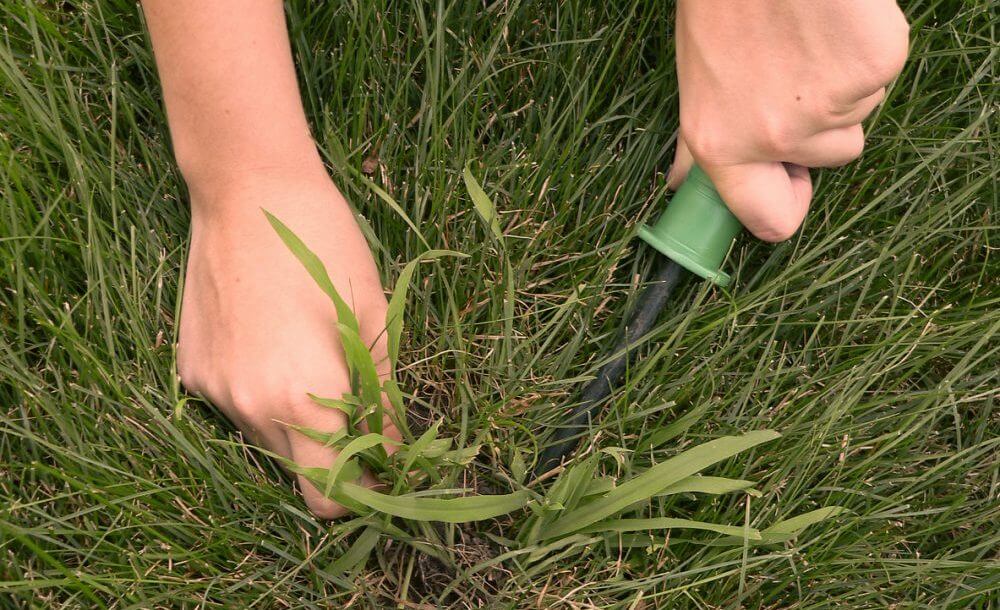By definition, a weed is a plant out of place and unwanted and is therefore the focus of eradication methods. While some folks may be okay with an entire lawn composed entirely of crabgrass, most homeowners loath crabgrass! This blog focuses on the art and science of reducing and hopefully removing this opportunistic grassy weed.
Crabgrass is an annual grassy weed, much like petunias that you would plant in your flower bed each spring. When frost occurs in the fall, they die. Crabgrass is a very aggressive weed and left unchecked, it can take over a lawn in a few mere seasons. The best way to control and reduce crabgrass is to create and maintain a thick and healthy lawn…literally not giving crabgrass an opening. But where do you start if you don’t have a thick and healthy lawn?
Pre-Emergent Application(s)
Step one is to prevent as much crabgrass from germinating from seed in the spring, over as many seasons as necessary, until your lawn is in better shape. This is done by applying a special herbicide, generally in New England from late March through mid-May, called a pre-emergent. Weak and thin lawns are ideal candidates for a pre-emergent application – a ‘rescue treatment’ to turn the scale in favor of good grass versus crabgrass.
In most cases, you only need to apply one treatment of this crabgrass control/suppression in a single season for adequate results. However, most materials have a wide range for its rate of application, depending upon when the material is applied and particular pressures on the lawn. For example, a thin, open and sunny lawn would certainly have more crabgrass pressure than a thicker, sod lawn or perhaps one in partial shade. It makes sense that the high pressure sunny lawn would benefit from a higher rate of crabgrass control, applied earlier in the season versus late May.
Caution must be exercised when using the higher application rate of this type of herbicide simply because too much can mean suppression on desirable grass seed well into fall when you would most certainly want to aerate and overseed. Combining overseeding with a fall aeration will thicken your lawn and help to reduce crabgrass the following season. Since most pre-emergent crabgrass control products inhibit any kind of grass seed, too much in the spring is not necessary and would prevent desirable grass from germinating in the fall.
Luckily there are new herbicides on the market that allow for spring crabgrass suppression and the ability to seed or overseed even in the spring. This added benefit comes in very handy for lawns that may be in such disarray that spring aeration and or overseeding is desired due to extreme lack of density and poor turf quality. These products command top dollar as patented new materials, but do provide nice results.
Post Emergent Control
We have discussed pre-emergent crabgrass control but have yet to mention post emergent products that can be used later in the season on existing crabgrass plants in there various stages of growth. Post emergent crabgrass control can be very helpful to lawns that may have missed a spring pre-emergent, are prone to crabgrass along hot spots like the edges of driveways/walkways, or are thin enough that the pre-emergent application fails in part by July or August. In these cases, a post emergent spray can be a wonderful tool to cleanup crabgrass plants that would otherwise go to seed, adding future pressure to the lawn the following spring.
A Healthy Lawn is Key
Crabgrass can also be reduced over time by enhancing the existing turf and making the growth conditions for crabgrass more unfavorable. Impactful lawn practices include proper mowing at 3”, improving soil pH, reducing compaction through aeration, adding new grasses via overseeding, as well as fertilizing at least 2-3 times per season.
Between cultural practices and sprays, crabgrass can certainly be reduced and even eliminated for all intents and purposes. While using herbicides is an effective way to reduce crabgrass, especially in thin/weak areas, long-term crabgrass reduction should be accomplished through thoughtful turf management. A healthy lawn will allow for fewer treatments and a lower rate of application. Chippers is proud that our approach to lawn care and in this case, specifically crabgrass control, is based on the specific needs of each lawn. We adjust the timing, frequency and the rate of application as necessary. Please do not ever settle for a cookie cutter approach to having products applied to your lawn.
For more information on ways to effectively and safety reduce crabgrass in your lawn with new organic or traditional products and creating a longer term crabgrass-resistant lawn, please contact your local lawn care professional.


